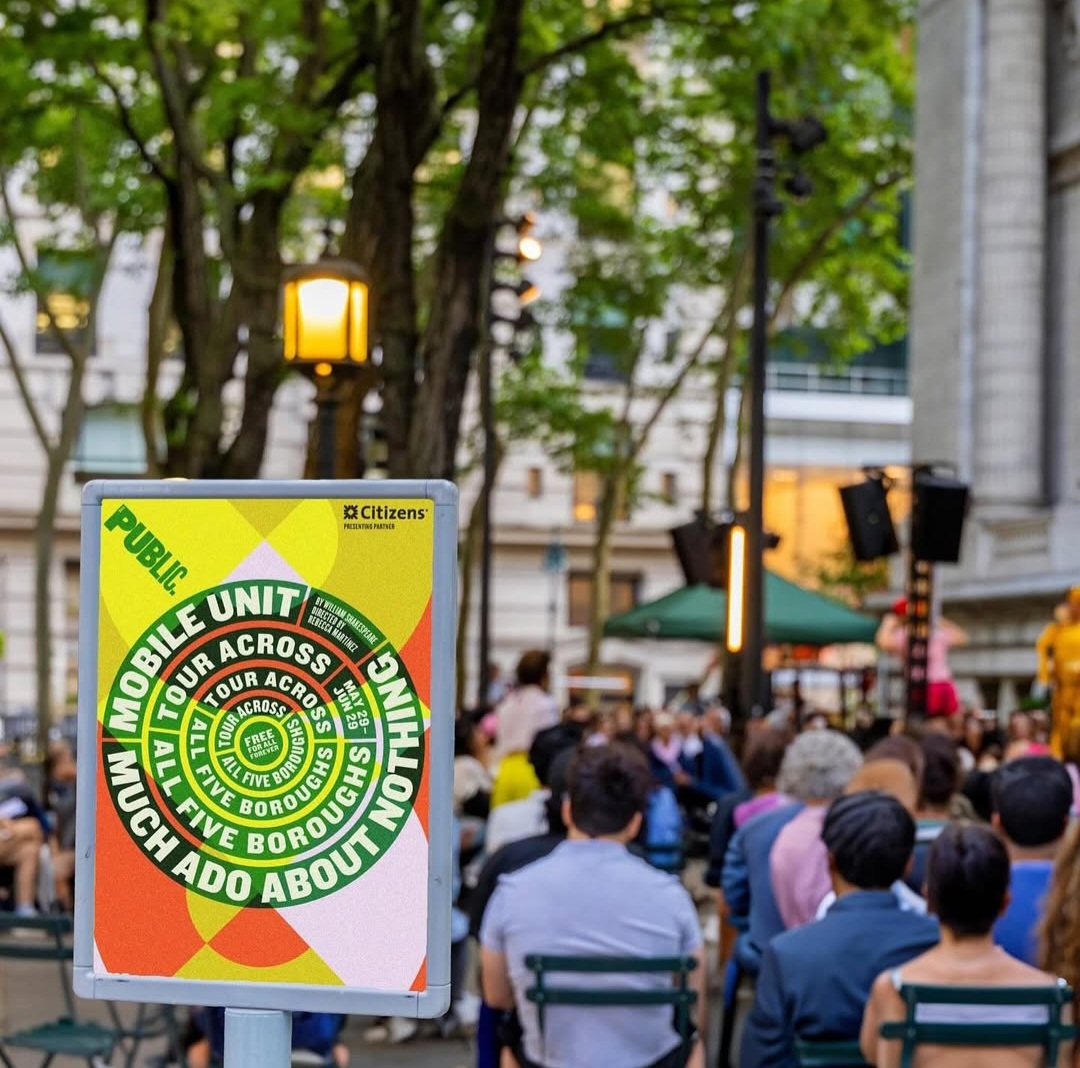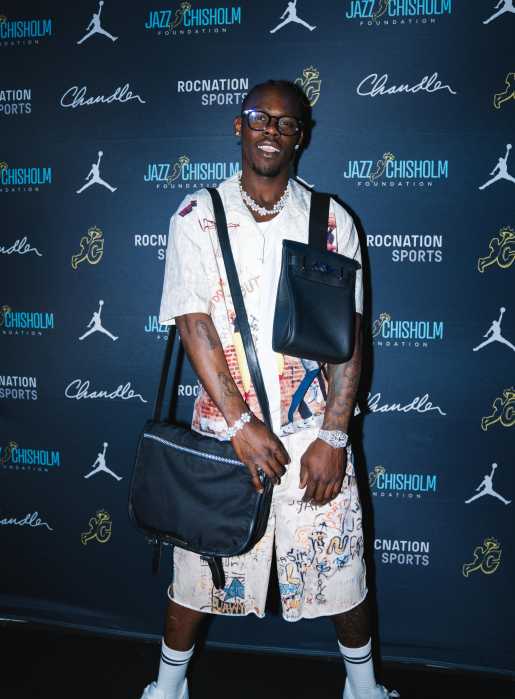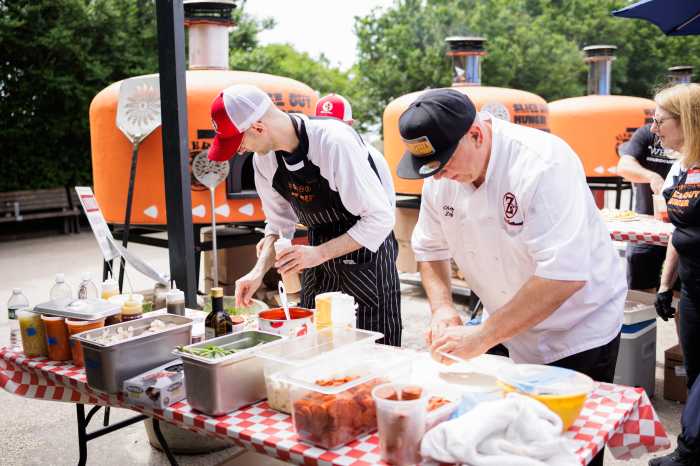By Julie Shapiro
Anne McDonough stood on a strip of concrete along lower Broadway, between the sidewalk and the street, with an exasperated look on her face.
McDonough, 55, had just missed two buses in a row because she hadn’t been able to get around the fence that separates the sidewalk from the concrete platform where the buses pull up, called a bus bulb.
“I’m not sure why they were put in,” she said of the bulbs. “They make things a lot harder and the traffic is worse. I could just as easily stand on the sidewalk.”
The city installed four bus bulbs on Broadway a year and a half ago to give people a place to wait for the bus. At the same time, the city took one of Broadway’s two lanes and dedicated it just to buses, leaving all other traffic to share the remaining lane.
The four bus bulbs at Spring, Grand, Walker and White Sts. cost $250,000 to build. A fifth will open next spring at Houston St., and the city does not plan to add any more on Broadway.
The bulbs have attracted many complaints from Lower Manhattan residents and workers, who say the bulbs are slowing traffic on Broadway to a crawl and making the street dangerous for cyclists. Some say the dedicated bus lane is a good idea in theory — but it is often clogged with taxis and other vehicles that shouldn’t be there.
Luis Sanchez, Lower Manhattan borough commissioner for the city Department of Transportation, defended the bulbs and bus lane at a recent community board meeting.
“It seems to be working,” he said. “We’re satisfied with it. Obviously we would like to make it work better, but we don’t see any point in the near future where we would even consider changing it.”
Buses generally travel slower than cars, because they have to make frequent stops. The goal of the dedicated lane, Sanchez said, was to make buses and cars on Broadway go the same speed. After the D.O.T. installed the bus bulbs, both cars and buses took an average of 15 or 16 minutes to get from Houston St. to Fulton St.
But Sanchez does not know if that’s an improvement in bus speed since the D.O.T. did not collect data before the bulbs were installed. It’s possible the bulbs have slowed down cars, rather than speeded up buses.
Charles Seaton, spokesperson for New York City Transit, said there was no way to determine whether the bus bulbs have increased bus ridership because the agency only monitors ridership on entire bus lines and not on particular sections of them.
The dedicated bus lane is in effect Monday through Friday from 7 a.m. to 6 p.m., and Sanchez said nearly 70 percent of vehicles comply with it. More than 1,500 buses traverse Broadway at Vesey St. each day during that period.
“We would like to see more enforcement, but considering the limited enforcement that’s there, we’re still doing pretty well,” Sanchez said.
As Sanchez finished his presentation last week, Community Board 1’s Quality of Life Committee remained unconvinced.
“I can’t for the life of me figure out what the good of the bus bulbs are,” Diane Lapson said. “I’m not being sarcastic — I really can’t grasp this. There’s no way the traffic could be moving the same as before the bulbs were there…. Everyone I talk to, their immediate reaction is, ‘What the hell did they do?’”
Albert Capsouto, co-chairperson of the committee, replied, “They’re trying to make it so difficult that no one wants to drive Downtown.”
Sanchez did not disagree.
“If you provide the road, they will come,” he said. “We wanted to take the road away so that they wouldn’t come. We wanted to keep Broadway as free-flowing as possible.”
The biggest problem Capsouto noticed was that tour buses pull up to the bulbs and then sit there for 10 or 15 minutes, blocking a lane of traffic and preventing city buses from pulling up. The city buses then have to swing around the tour buses into the only other available lane.
Sanchez said the city noticed the same problem. On the Spring St. bulb, vendors set up camp selling bottled water, and when tour buses stop, the vendors often go onto the bus to solicit customers. The city will not allow tour buses to use the bus bulbs if that continues, Sanchez said.
The city is considering some changes, like painting the bus lane red and removing some of the fence panels that separate the bulb from the sidewalk.
Barry Skolnick, a board member, was particularly concerned about cyclists, who have to maneuver around the bus bulbs and into the middle of the street as they try to turn onto Broadway.
Sanchez said he had not received any complaints from cyclists, which board members said was “shocking.”
The D.O.T.’s plan for Broadway also included loading zones on parts of both sides of the street, but on a recent afternoon the street was lined with parked cars.
The bus bulbs are not without supporters.
Deryl Jones, 57, who was recently waiting for the M6 bus on the bulb at Broadway and White St., said it was convenient to have a separate place to stand. He had space on the bulb to rest the half a dozen plastic bags he was carrying containing the jewelry he peddles.
As for the bus lane, “It helps if the cabs and cars stay out of the way,” Jones said. “Otherwise it’s very slow.”
Michael McKenzie, 47, shrugged at the mention of the bus bulbs as he maneuvered his M1 bus through the traffic on Broadway.
“If they don’t enforce it, it doesn’t really matter,” he said of the dedicated lane.
McKenzie has been driving the M1 on and off for 19 years, and while he said traffic in Lower Manhattan isn’t as bad as it was before 9/11, it is steadily getting worse.
“It’s hard to be down here,” he said, nodding at the narrow, clogged street. “It gets so small.”
McKenzie is accustomed to taxis weaving in and out of the bus lane, but as he pulled up to his next stop, he was cut off not by a taxi but by another city bus.
Shaking his head, he said, “You’d think we didn’t drive for the same company.”
Julie@DowntownExpress.com




































